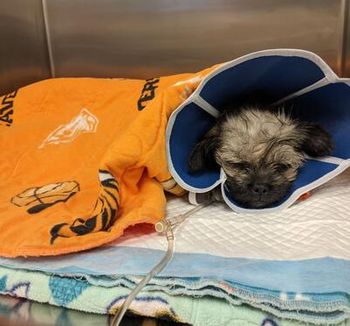
Experts Identify Behavioral Signs of Pain in Cats
Experts in feline medicine have identified 25 behavioral signs of pain in cats.
Experts in feline medicine have identified 25 behavioral signs of pain in cats, according to a
The study authors, Dr. Isabella Merola and Prof. Daniel S. Mills (University of Lincoln, United Kingdom), focused on signs of pain that could be identified by natural observation, as opposed to provoked tests. According to the authors, feline pain assessment tools based only on observation have not yet been validated. Therefore, they compiled a list of possible signs of pain from previously published studies and solicited the opinions of international feline medicine experts working in various disciplines.
“In the absence of definitive objective evidence for any sign, expert opinion and judgment provides a reasonable starting point for identifying the signs which should be prioritised,” they write. “By creating a core set of signs, we lay the foundation for future studies aimed at creating pain scales for cats based on natural observation that minimise subjective bias in the interpretation of each sign.”
Study participants assessed each sign of pain according to whether it was sufficient to show pain or necessary to show pain. A consensus was built through 4 consultation rounds, during which participants could add additional signs of pain for consideration. Nineteen experts ultimately reviewed 91 potential signs of pain in cats.
No signs were thought to be necessary to show pain (that is, their absence would indicate that a patient was not in pain). Twenty-three signs were considered sufficient to show pain (their presence would indicate that a patient was in pain, but their absence would not mean that a patient was not in pain). Two additional signs were considered reliable indicators of pain, although participants disagreed on the level of pain they signified.
Signs identified as sufficient to indicate pain include the following (see the published article for the full list):
- Lameness
- Difficulty jumping
- Reluctance to move
- Withdrawing/hiding
- Absence of grooming
- Decreased appetite
- Lower head posture
- Blepharospasm
The authors note that behavioral signs of pain should be interpreted in the context of the patient’s mood and temperament. Growling, for example, was considered a reliable pain indicator, but it is also related to a cat’s temperament.
The list of pain signs identified by this expert consensus can be used to create a behavioral assessment tool for pain in cats, conclude the authors. The list can also help cat owners recognize signs of pain in their pets. The authors recommend further study to assess the validity of these signs.
The study was supported by Feline Friends Derbyshire.
Dr. Laurie Anne Walden received her doctorate in veterinary medicine from North Carolina State University in 1994. After an internship at Auburn University College of Veterinary Medicine, she returned to North Carolina, where she has been in companion animal general practice for over 20 years. Dr. Walden is also a board-certified Editor in the Life Sciences and owner of Walden Medical Writing.
Newsletter
From exam room tips to practice management insights, get trusted veterinary news delivered straight to your inbox—subscribe to dvm360.




